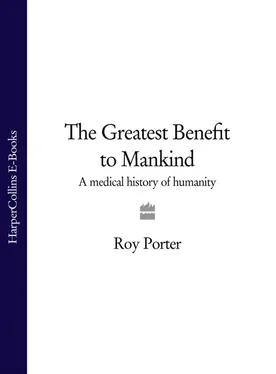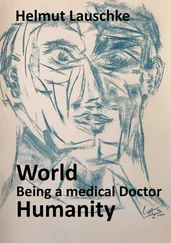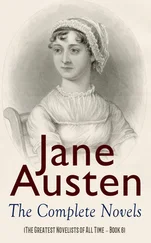Like earthquakes, floods, droughts and other natural disasters, illness colours experiences, outlooks and feelings. It produces pain, suffering and fear, threatens the individual and the community, and raises the spectre of that mystery of mysteries – death. Small wonder impassioned and contested responses to sickness have emerged: notions of blame and shame, appeasement and propitiation, and teachings about care and therapeutics. Since sickness raises profound anxieties, medicine develops alongside religion, magic and social ritual. Nor is this true only of ‘primitive’ societies; from Job to the novels of Thomas Mann, the experience of sickness, ageing and death shapes the sense of the self and the human condition at large. AIDS has reminded us (were we in danger of forgetting) of the poignancy of sickness in the heyday of life.
Different sorts of sickness beliefs took shape. Medical ethnologists commonly suggest a basic divide: natural causation theories, which view illness as a result of ordinary activities that have gone wrong – for example, the effects of climate, hunger, fatigue, accidents, wounds or parasites; and personal or supernatural causation beliefs, which regard illness as harm wreaked by a human or superhuman agency. Typically, the latter is deliberately inflicted (as by a sorcerer) through magical devices, words or rituals; but it may be unintentional, arising out of an innate capacity for evil, such as that possessed by witches. Pollution from an ‘unclean’ person – commonly a corpse or a menstruating woman – may thus produce illness. Early beliefs ascribed special prominence to social or supernatural causes; illness was thus injury, and was linked with aggression.
This book focuses mostly upon the naturalistic notions of disease developed by and since the Greeks, but mention should be made of the supernatural ideas prominent in non-literate societies and present elsewhere. Such ideas are often subdivided by scholars into three categories: mystical, in which illness is the automatic consequence of an act or experience; animistic, in which the illness-causing agent is a personal supernatural being; and magical, where a malicious human being uses secret means to make someone sick. The distribution of these beliefs varies. Africa abounds in theories of mystical retribution, in which broken taboos are to blame; ancestors are commonly blamed for sickness. Witchcraft, the evil eye and divine retribution are frequently used to explain illness in India, as they were in educated Europe up to the seventeenth century, and in peasant parts beyond that time.
Animistic or volitional illness theories take various forms. Some blame objects for illness – articles which are taboo, polluting or dangerous, like the planets within astrology. Other beliefs blame people – sorcerers or witches. Sorcerers are commonly thought to have shot some illness-causing object into the victim, thus enabling healers to ‘extract’ it via spectacular rituals. The search for a witch may involve divination or public witch-hunts, with cathartic consequences for the community and calamity for the scapegoat, who may be punished or killed. Under such conditions, illness plays a key part in a community’s collective life, liable to disrupt it and lead to persecutions, in which witchfinders and medicine men assume a key role.
There are also systems that hinge on spirits – and the recovery of lost souls. The spirits of the dead, or nature spirits like wood demons, are believed to attack the sick; or the patient’s own soul may go missing. By contrast to witchcraft, these notions of indirect causation allow for more nuanced explanations of the social troubles believed to cause illness; there need be no single scapegoat, and purification may be more general. Shamanistic healers will use their familiarity with worlds beyond to grasp through divination the invisible causes behind illness. Some groups use divining apparatus – shells, bones or entrails; a question will be put to an oracle and its answer interpreted. Other techniques draw on possession or trance to fathom the cause of sickness.
Responses to sickness may take many forms. They may simply involve the sick person hiding away on his own, debasing himself with dirt and awaiting his fate. More active therapies embrace two main techniques – herbs and rituals. Medicines are either tonics to strengthen the patient or ‘poisons’ to drive off the aggressor. Choice of the right herbal remedy depends on the symbolic properties of the plant and on its empirical effects. Some are chosen for their material properties, others for their colour, shape or resonances within broader webs of symbolic meaning. But if herbs may be symbolic, they may also be effective; after much pooh-poohing of ‘primitive medicine’, pharmacologists studying ethnobotany now acknowledge that such lore provided healers with effective analgesics, anaesthetics, emetics, purgatives, diuretics, narcotics, cathartics, febrifuges, contraceptives and abortifacients. From the herbs traditionally in use, modern medicine has derived such substances as salicylic acid, ipecac, quinine, cocaine, colchicine, ephedrine, digitalis, ergot, and other drugs besides.
Medicines are not necessarily taken only by the patient, for therapy is communal and in traditional healing it is the community that is being put to rights, the patient being simply the stand-in. Certain healing rituals are rites de passage, with phases of casting out and reincorporation; others are dramas; and often the patient is being freed from unseen forces (exorcism). Some rituals wash a person clean; others use smoke to drive harm out. A related approach, Dreckapotheke, involves dosing the patient with disgusting decoctions or fumigations featuring excrement, noxious insects, and so forth, which drive the demons away.
A great variety of healing methods employ roots and leaves in elaborate magical rituals, and all communities practise surgery of some sort. Many tribes have used skin scarifications as a form of protection. Other kinds of body decoration, clitoridectomies and circumcision are common (circumcision was performed in Egypt from around 2000 BC). To combat bleeding, traditional surgeons used tourniquets or cauterization, or packed the wound with absorbent materials and bandaged it. The Masai in East Africa amputate fractured limbs, but medical amputation has been rare. There is archaeological evidence, however, from as far apart as France, South America and the Pacific that as early as 5000 BC trephining was performed, which involved cutting a small hole in the skull. Flint cutting tools were used to scrape away portions of the cranium, presumably to deliver sufferers from some devil tormenting the soul. Much skill was required and callous formations on the edges of the bony hole show that many of the patients survived.
Illness is thus not just biological but social, and concepts of the body and its sicknesses draw upon powerful dichotomies: nature and culture, the sacred and the profane, the raw and the cooked. Body concepts incorporate beliefs about the body politic at large; communities with rigid caste and rank systems thus tend to prescribe rigid rules about bodily comportment. What is considered normal health and what constitutes sickness or impairment are negotiable, and the conventions vary from community to community and within subdivisions of societies, dependent upon class, gender and other factors. Maladies carry different moral charges. ‘Sick roles’ may range from utter stigmatization (common with leprosy, because it is so disfiguring) to the notion that the sick person is special or semi-sacred (the holy fool or the divine epileptic). An ailment can be a rite de passage, a childhood illness an essential preliminary to entry into adulthood.
Читать дальше












